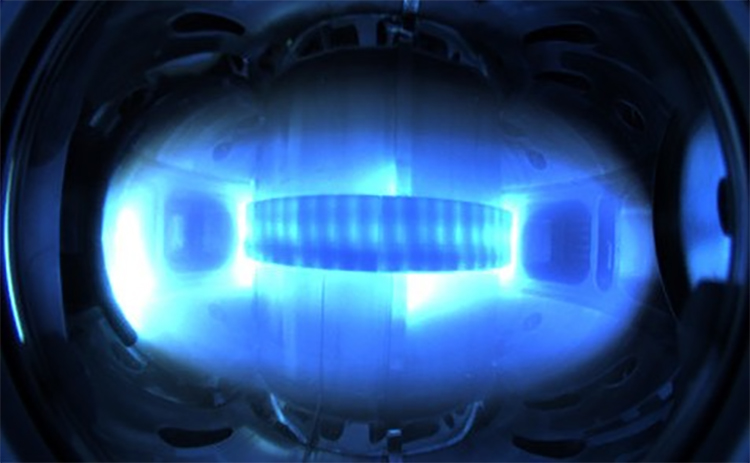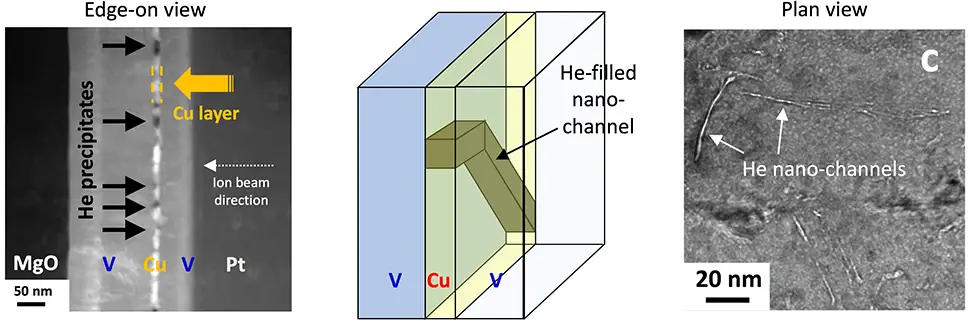
16th November 2017 New helium-resistant materials could make fusion energy a reality Researchers have found a way of protecting the materials in fusion reactors from degradation caused by helium, using nanocomposite solids.
Fusion is the process that powers the Sun. Harnessing it on Earth would provide unlimited clean energy. However, constructing a fusion power plant has proven to be a daunting task, in part because no materials can adequately withstand the conditions found in a reactor core. Now, researchers at Texas A&M University have discovered a way to use materials that may be suitable. The Sun makes energy by fusing hydrogen atoms – each with one proton – into helium atoms with two protons. Helium is the by-product of this reaction. Although it does not threaten the environment, it wreaks havoc upon the materials needed to make a fusion reactor. “Helium is an element that we don't usually think of as being harmful,” said Dr. Michael Demkowicz, associate professor in the Department of Materials Science and Engineering. “It is not toxic and not a greenhouse gas, which is one reason why fusion power is so attractive.” However, if you force helium inside a solid material, it bubbles out, much like carbon dioxide bubbles in carbonated water. “Literally, you get these helium bubbles inside of the metal that stay there forever because the metal is solid,” Demkowicz said. “As you accumulate more and more helium, the bubbles start to link up and destroy the entire material.” Working with researchers at Los Alamos National Laboratory in New Mexico, Demkowicz investigated how helium behaves in nanocomposite solids – materials stacked into thick metal layers. Their findings, recently published in Science Advances, were a surprise. Rather than making bubbles, the helium in these materials formed long channels, resembling veins in living tissues.
Credit: Texas A&M University
“We were blown away by what we saw,” Demkowicz said. “As you put more and more helium inside these nanocomposites, rather than destroying the material, the veins actually start to interconnect, resulting in kind of a vascular system.” This discovery paves the way to helium-resistant materials needed to make fusion energy a reality. Demkowicz and his collaborators believe that helium may move through the networks of veins that form in their nanocomposites, eventually exiting the material without causing any further damage. “Applications to fusion reactors are just the tip of the iceberg,” Demkowicz said. “I think the bigger picture here is in vascularized solids, ones that are kind of like tissues with vascular networks. What else could be transported through such networks? Perhaps heat or electricity or even chemicals that could help the material self-heal.” ---
Comments »
|








